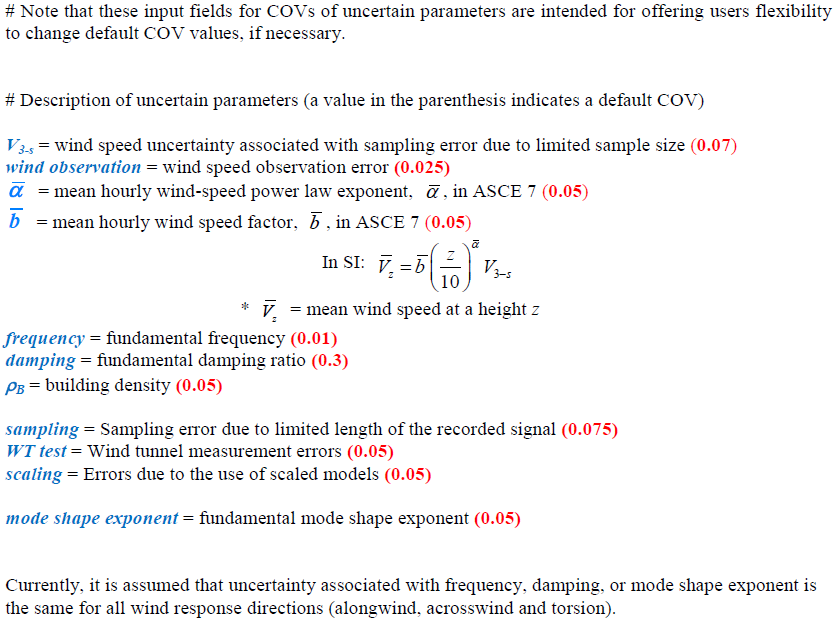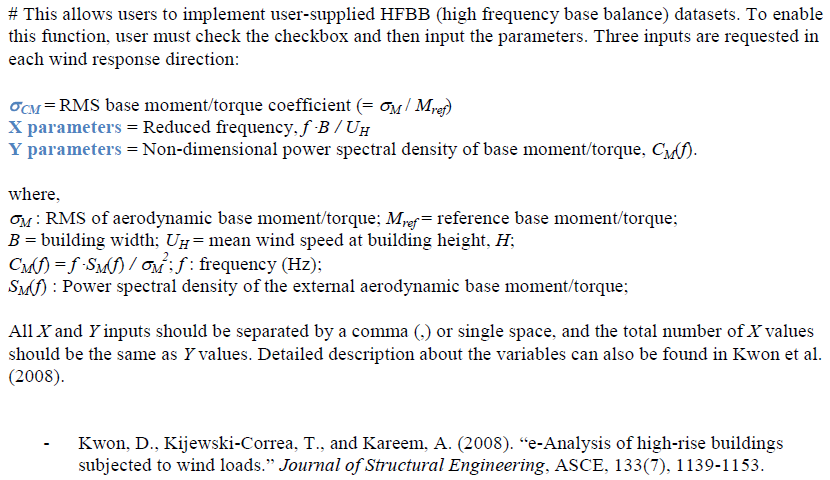 |
|||||
| Step 1 : Select cross-sectional shape of interest: values are side ratios (D/B) | |||||
NatHaz Modeling Laboratory  University of Notre Dame, USA Dr. Ahsan Kareem Robert M. Moran Professor Dept. of Civil Engineering and Geological Sciences kareem@nd.edu Dr. Dae Kun Kwon Postdoctoral Research Associate Dept. of Civil Engineering and Geological Sciences dkwon@nd.edu |
Wind Engineering Research Center (WERC-TK)  TamKang University, Taiwan Dr. Chii-ming Cheng Professor Dept. of Civil Engineering cmcheng@mail.tku.edu.tw Dr. Jenmu Wang Associate Professor Dept. of Civil Engineering wang@km.ce.tku.edu.tw |
.gif)

